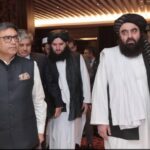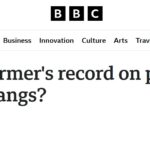Agha Iqrar Haroon
Development Observer of Central Asia and Eastern Europe
![iqrar-149x149[1]](http://www.dispatchnewsdesk.com/wp-content/uploads/iqrar-149x1491.jpg) Ukraine (Україна is her name but Russia calls her Украина) is a beautiful sensual, dutiful, faithful, hardworking and gorgeous middle-age woman who had been living with a man namely Russia (Россия) for long but this man became weaker and weaker in late 80s and early 90s so he could not stop Украина (Ukraine) to stay with him and she left him without any fighting or abuse. However this man won a jackpot in oil business around 2005 and by reinvesting his money, he became stronger and stronger by 2010 and wishfully he contacted Украина to come back home and stay with him. However it was too late because now Украина has romance with another person—European Union. Russia was cunning man so he did not stop children of Украина to visit his wealth land—The Federation of Russia—so her children keep working and look after their bread and butter while European Union did not allow her children to visit its wealth land—Europe. European Union is of the view he will not allow visits (visa) unless she (Украина) starts living with him. While Russia is saying he can stop her children to visit his wealth land immediately if she tries to live with European Union. European Union also demands her to change rules of her home and live in her home as he wishes (change of legal system in Ukraine) while Russia says live as you wish but keep me as your top priority. EU is also pressing Украина to release her one old servant (prime minister is servant of people) who was involve in stealing her kitchen utensils and even cash from her bedroom locker (corruption charges on former prime minister Yulia).
Ukraine (Україна is her name but Russia calls her Украина) is a beautiful sensual, dutiful, faithful, hardworking and gorgeous middle-age woman who had been living with a man namely Russia (Россия) for long but this man became weaker and weaker in late 80s and early 90s so he could not stop Украина (Ukraine) to stay with him and she left him without any fighting or abuse. However this man won a jackpot in oil business around 2005 and by reinvesting his money, he became stronger and stronger by 2010 and wishfully he contacted Украина to come back home and stay with him. However it was too late because now Украина has romance with another person—European Union. Russia was cunning man so he did not stop children of Украина to visit his wealth land—The Federation of Russia—so her children keep working and look after their bread and butter while European Union did not allow her children to visit its wealth land—Europe. European Union is of the view he will not allow visits (visa) unless she (Украина) starts living with him. While Russia is saying he can stop her children to visit his wealth land immediately if she tries to live with European Union. European Union also demands her to change rules of her home and live in her home as he wishes (change of legal system in Ukraine) while Russia says live as you wish but keep me as your top priority. EU is also pressing Украина to release her one old servant (prime minister is servant of people) who was involve in stealing her kitchen utensils and even cash from her bedroom locker (corruption charges on former prime minister Yulia).
Since Украина is very hard working woman so she keeps producing different products at home like cottage cheese, chocolates, jams etc etc. Russia buys such products from her in good quantity while EU asks her to be competitive (export of Ukraine). She is facing difficult situation—her heart is with new friend EU but her financial and social needs are addressed by her old man—Russia. Although she does not like habit of Russia of bully her but EU is not offering her protection from Russia so what to do??? A big question still needs answer.
Now the reality
EU invited her to live with him in Lithuania last week but did not give her a dateline when he (EU) will start to look after her fully socially and economically. He also did not give her commitment that he will give her children permission to visit his land (visa), will buy her homemade products and protect her from angry man Russia. He told her—come we will discuss these issues thereafter first you announce publically that you wish to stay with me.
Situation at home
Hundreds of thousands of Ukrainians (children of Украина) were protesting in streets in favour of EU where they were brutally beaten.
The deep dividing line, of which Ukraine is a victim, is between the EU and Russia. Moscow has always seen the EU’s engagement in Eastern Europe as competitive interference and there have been not just a few moments in which the confrontation was out in the open – during the 2003 Rose Revolution in Georgia, the 2004 Orange Revolution in Ukraine and in 2008, with the war in Georgia. It has been said that the Orange Revolution represented to Russia what September 11, 2001 did to the United States. Indeed, this time Russia has pulled out all stops to fight for the country to stay within its sphere of influence.
Eurasian Union verses European Union
European interests include to have a close ally who can help to provide young soldiers for NATO engagements all over the world (Hungary is largest supplier of NATO soldiers out of real NATO leadership), to look after security of their energy supplies – about one-third of Europe’s gas, oil and coal imports come from Russia. Here Ukraine is the most important country for EU because it is on main route of gas supply.
Now the EU is lost over how to respond to Moscow’s bullying tactics in Eastern Europe. Brussels (EU) is entering into a geopolitical competition to pry Eastern Europe out of Moscow’s reach. But Brussels is notoriously bad at these tactics, preferring long-term visions of change, trade and legal calculations, to playing chess without really knowing the tricks.
The “Putinist Approach”
Putin plans to bring post-Soviet countries into a Russia-led Eurasian Union (EAU) in 2010. In November 2011, the presidents of Kazakhstan and Belarus signed an agreement with Russia to launch the Eurasian Union and make it fully operational by 2015. Membership in the EAU entails uniting economies, legal systems, and customs services – and military coordination with Russia. In order for the ambitious plan to work, Russia needs to lure strategically important ex-Soviet states such as Ukraine into the game.
The Eurasian Development Bank – founded by Russia and Kazakhstan in 2006 is working now for Customs Union. Pro-European analysts believe that Putin’s plan to integrate post-Soviet countries is a trap to end of European access to Central Asia. The World Bank (that is known as tool of NATO and United States) says in its report, published in February 2013:
“Customs Union creates an opportunity for Russia to expand its exports and its presence in Central Asia at the expense of exports from other countries, such as the European Union and China”.
According to the World Bank analysis, evidence suggests that Russia has been the main beneficiary in the short term of the Customs Union (launched on January 1, 2010 with Kazakhstan and Belarus), and this is also expected to be the case once the organisation grows into a larger Eurasian Union. There are some benefits to be gained by Central Asian member states in the medium to long term, as Russia is their most significant trading partner. Border controls within the union are removed for goods passing through, and all member states impose the same tariff on imports from outside the union.
The economic benefits have lured at least one more Central Asian post-Soviet country – Kyrgyzstan – to the union. It’s not a member state yet, but it has committed to doing so. By joining the Customs Union and the Eurasian Union, Kyrgyz Republic would get access to a very large common market, which would attract investments and new technologies.
European viewpoint
European media is promoting the idea that there is no doubt that membership in the union could bring economic benefits of Central Asian and Eastern European countries but this will also carry a high price, degrading the countries’ sovereignty and independence from Russia, with its imperial past and regionwide reputation as an aggressor and like the former Soviet Union, the Eurasian Union would be run from Moscow.
Written on the wall
Whatever Europe thinks and promotes through its media, reality is clear that Eurasian Union is emerging fast and righting now the EU policies look more promises than support to Eastern European countries. It has made commitments to deepen political and economic relations through the Eastern Partnership, it has fostered hopes, it has influenced pro-European groups as an example of democracy, it has upheld the same bastion of anti-corruption which has driven citizens in Ukraine to the streets to punish their leaders and their off-shore bank accounts. But it (EU) is offering just time tables, long term commitments but bread, butter, visas, working opportunities and nothing concrete and nothing tangible is offered to such countries like Ukraine.
While Russia is led by strong man Vladimir Putin, this competition will not end. Europeans ought to find a commonly agreed upon way to deal with Russia. Otherwise, the EU will not be able to handle Eastern Europe with sufficient care – failing hopes and expectations of the Ukrainians in the cold streets of cities all around the country.
In short, the EU has responsibilities. If it does not play well to the current turmoil, it will fail the region and lose face. Decision time is coming, and dealing with Russia is the issue.





